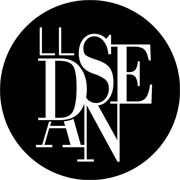
“The dance, oldest and most human of the arts, because it is performed with the human body, is the language which transcends all barriers, all boundaries, all limitations of spoken tongues. It is proof of man’s oneness.” – José Limón
The question of ‘what is contemporary dance?’ is one that I have tried to answer many times over the years as a professional contemporary dancer. The question often comes at dinner parties or social events with a sweetly ignorant inquirer who is trying to wrap their head around the idea of dance as a profession and the murky comprehension of dance that does not exist on TV or at the Paris Opera House. It is a discipline that is ever evolving and has been influenced by many dances, cultures, and art forms and is most importantly an individual expression of movement and emotion. Because of this, it is difficult to define. I have sometimes responded to the question by saying that it is a form whose origins stem from Ballet but with less narrative aspects and more abstract concepts and physical approaches. This is not entirely accurate though, as many contemporary dancers do not come from ballet backgrounds and the focus on movement in contemporary dance is not restricted to technique and form. It looks more to personal interpretation and the translation of ideas and concepts into physical expression. In order to understand contemporary dance today it is helpful to look to the people and forms that have helped to shape it. Acknowledging history is important in order to evolve, innovate, create and re-create.
In this blog, it is impossible to write an in-depth account of the history of modern dance, but I will briefly mention several trailblazers who have played key roles in my personal journey as a contemporary dancer. In the early 20th century, dancers like Isadora Duncan and Ruth St. Denis broke away from ballet by performing barefoot and incorporating a more personal and less limited range of gestures. Later, with Martha Graham and José Limón, a deeper investigation of the use of gravity through resistance or release arose. The defining movement of Graham is largely considered to be the cycle between contraction and release. She danced with an insight into the human condition. The contraction can communicate pain or angst, while the high release can offer feelings of freedom, joy or bliss. José Limón developed a syllabus with the principles of weight, fall, and recovery and was interested in exploring a fluid succession of movement with effortless and subtle ways of communicating. Alvin A iley was a choreographer who played an essential role in revolutionizing African-American participation in 20th century concert dance. His choreography drew largely on the movement syllabus of Lester B. Horton which can be defined by angularity and isolations, dynamic freedom of expression, and percussive body movements. Ailey’s masterpiece, ‘Revelations’ is one of the most important modern dance works ever created. When I saw it for the first time in New York, I was moved beyond words and deeply affected by the ability of this choreography to communicate joy, anguish, faith, hope and tenacity.
iley was a choreographer who played an essential role in revolutionizing African-American participation in 20th century concert dance. His choreography drew largely on the movement syllabus of Lester B. Horton which can be defined by angularity and isolations, dynamic freedom of expression, and percussive body movements. Ailey’s masterpiece, ‘Revelations’ is one of the most important modern dance works ever created. When I saw it for the first time in New York, I was moved beyond words and deeply affected by the ability of this choreography to communicate joy, anguish, faith, hope and tenacity.
When I teach contemporary, I introduce principles of classic modern dance (Graham, Horton, and Limón) with hopes that my students might take the knowledge and technical base, and transform it for their own bodies. I believe it is valuable to build the technique so that it can be broken. Contemporary dancers are asked to be vulnerable and self aware in order to reveal their souls on stage. As we train, we need to be constantly asking ourselves where our own interpretation is in the movement. I care about teaching dancers to rely not only on virtuosity, but to find their own freedom within the movements being asked of them. In this fast culture of constant change and content saturation, we are pushed to discover what it is that distinguishes us as artists. To be a contemporary dancer is to constantly evolve and push forward with new ideas and challenges while maintaining a connection to history and the ways that our artistry has been shaped. It is with great honour and responsibility that we create art and communicate through our bodies in order to evoke thought and change.
“There is a vitality, a life force, an energy, a quickening, that is translated through you into action, and because there is only one of you in all time, this expression is unique.”-Martha Graham
Erin O’Loughlin
